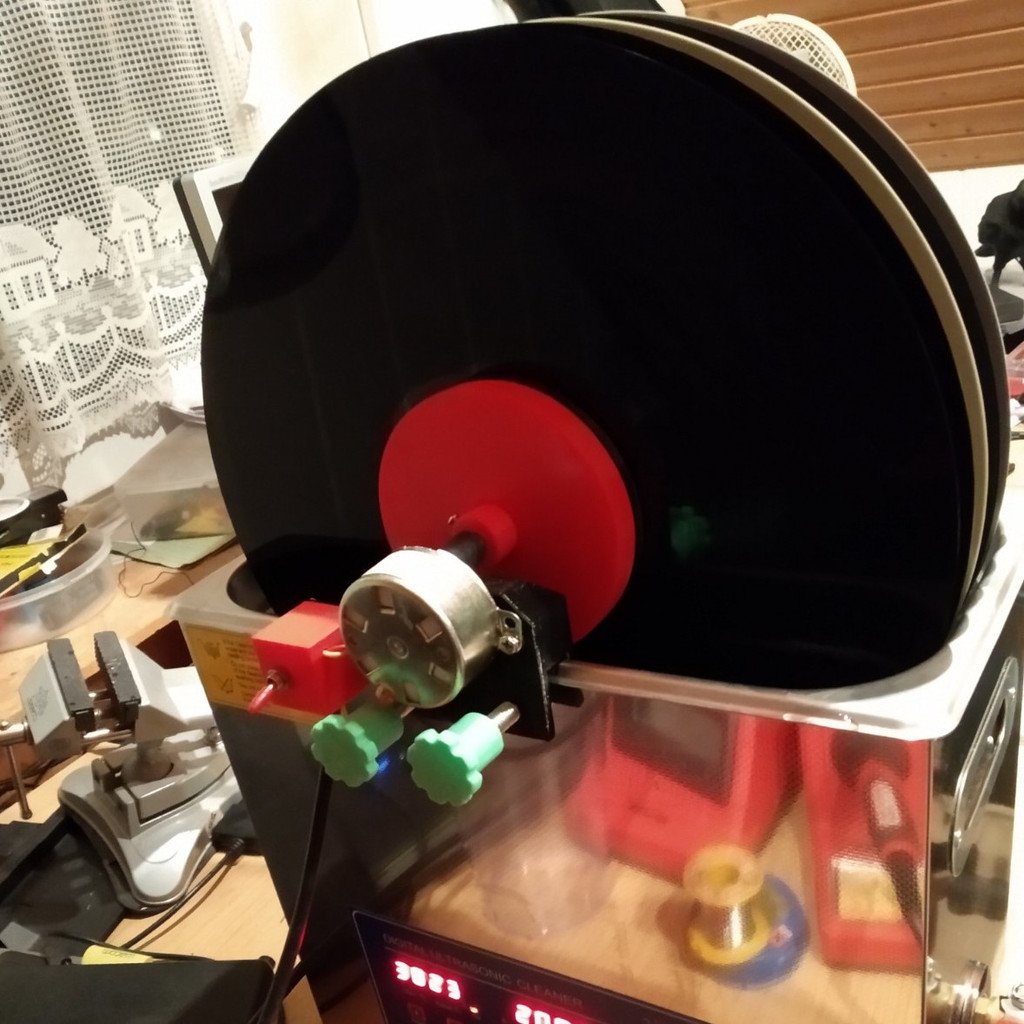
Vinyl record cleaner / Schallplatten Waschmaschine
thingiverse
Hi there, This is my attempt to clean my old records. And wow, it works great! Old records from the flea market sound like new (if they are not scratched), dust, dirt and static crackling are a thing of the past. What you will need: - Synchronous motor, about 1 rpm (e.g. https://www.ebay.com/itm/Synchronous-Motor-220V-1-RPM-Electric-Motor-Turret-Spindle-Motor-Synchronous-Motor/302986324387?hash=item468b6469a3:g:m7wAAOSwaDtb0FiF) - Axis 7 mm, about 140 mm long (e.g. https://www.ebay.com/itm/Aluminum-Alu-Round-Full-Material-Long-250mm-25cm-AlCuMgPb-from-6mm-200mm/113015159447?hash=item1a503a7a97:m:mRpi7ZOEXhMmnxenP53x6Dw) - Ultrasonic bath 6l (e.g. https://www.ebay.com/itm/Ultrasonic-Cleaner-Ultrasonic-Reiniger-Ultrasonic-Bath-3-Piece-Set-6L/312832752238?hash=item48d648fa6e:g:jyIAAOSwJ3Rb9-DY) - PLA filament - TPU filament - PETG or ABS filament - Various screws M8 and M3 - A small switch for the motor - Power cord - Ball bearing 608 - Hose 6 mm inside, about 20 mm long The motor bearings and the counter bearings should be made of PETG or ABS because the ultrasonic bath is heated and PLA deforms too quickly. The seals for sealing the labels should be made of TPU and glued to the spacers with a little superglue. It is cleaned in a mixture of 30% isopropanol, 70% distilled water, and a few milliliters of Mirasol (if necessary, detergent does too). I set the device's heating to 40 degrees and cleaned the records for about 15 minutes. The result is phenomenal. Even ancient records no longer crackle, no static crackling, no noise, just pure music! Of course, the machine does not get scratches, that should be clear to everyone!
With this file you will be able to print Vinyl record cleaner / Schallplatten Waschmaschine with your 3D printer. Click on the button and save the file on your computer to work, edit or customize your design. You can also find more 3D designs for printers on Vinyl record cleaner / Schallplatten Waschmaschine.
